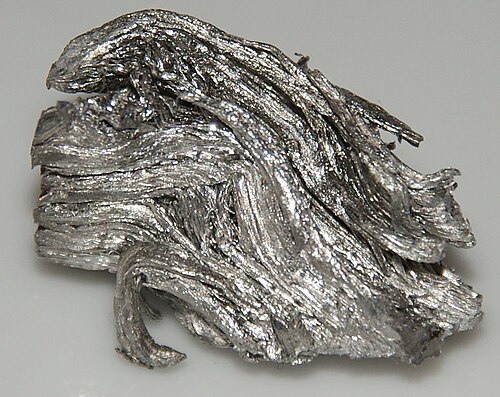
Mathematically Speaking with 76
Source guide
This source provides an in-depth analysis of the numbers 76 and 67, exploring their multifaceted significance across mathematics, science, and culture. The section on 76 highlights its identity as an even composite number and its connection to osmium, the densest naturally occurring element, while also focusing on its patriotic and artistic associations, such as the Philadelphia 76ers and the song “Seventy-six Trombones.” Conversely, the discussion of 67 emphasizes its crucial role as the 19th prime number, detailing specialized mathematical properties like being a Chen prime and an irregular prime, alongside its cultural links to 1967 (The Summer of Love) and its identity as the atomic number for holmium. Ultimately, the text aims to show that both integers possess versatile, memorable properties that extend far beyond simple arithmetic.
Mathematically Speaking with 76
• It’s an even composite number, factoring neatly into 2 × 2 × 19 (or 4 × 19), with exactly six divisors: 1, 2, 4, 19, 38, and 76. Not prime, but reliable—like a trusty calculator.
• In geometry, there are 76 unique compact uniform hyperbolic honeycombs in three dimensions, derived from Wythoff constructions. That’s some serious spatial swagger for a humble integer.
Scientifically Dense
• 76 is the atomic number of osmium, the densest naturally occurring element on Earth (22.59 g/cm³). If numbers had weight, 76 would sink your ship.
• Osmium - Wikipedia
 Culturally Iconic
Culturally Iconic
• “Seventy-six Trombones” is the legendary opener from the 1957 musical The Music Man, leading a parade of brass that still gets stuck in your head. It’s the ultimate earworm anthem for marching bands everywhere.
• The Philadelphia 76ers NBA team is named after 1776, the year of the Declaration of Independence—76 for short, symbolizing American grit (and occasional heartbreak for Philly fans).
• The “Spirit of ‘76” painting (from 1876) depicts Revolutionary War heroes drumming up patriotism; the “76” nods to that founding year, making it a staple in U.S. history memes and Fourth of July vibes.
• In Biblical numerology, the Hebrew word tsoor (meaning “rock” or “fortress,” often referring to God) appears exactly 76 times in the Old Testament, mostly in Psalms. Divine reliability, check.
• Numerologically, 76 vibes with themes of grace, transformation, and spiritual wholeness—like a cosmic high-five for personal growth.
Everyday Greatness
• The Bennington Flag (a Revolutionary War banner) proudly displays “76” as a shorthand for 1776, waving through history as a symbol of defiance.
• Plus, there’s Union 76 (now just 76), the gas station chain that’s been fueling road trips since 1922—practical heroism in every fill-up.
Mathematical Marvels of 67
67 is a pretty nifty number—prime, elegant, and packed with quirky properties that make it stand out in the world of math. It’s not the biggest kid on the block, but it’s got that “cool under pressure” vibe. Here’s why it’s great:
• Prime Status: 67 is the 19th prime number (right after 61 and before 71). Primes are the building blocks of numbers, only divisible by 1 and themselves. To check: no divisors from 2 to √67 (about 8.2), so yeah, it’s solo.
• Chen Prime: A special type of prime where adding 2 gives another prime or subprime (67 + 2 = 69? Wait, 69 isn’t prime—actually, Chen primes are p where p + 2 is either prime or a product of two primes. For 67, 69 = 3 × 23, so it qualifies. Twin-prime adjacent without being twins.
• Irregular Prime: In number theory, it’s one that doesn’t play nice with certain algebraic structures (like class number formulas in cyclotomic fields). Nerdy, but it means 67 resists easy factorization in advanced math.
• Palindromic in Multiple Bases: It’s the smallest number that’s a palindrome (reads the same forwards and backwards) in both base 5 (232) and base 6 (151). Try it: convert 67 to base 5 = 2×25 + 3×5 + 2 = 232₅, which is palindromic.
• Sum of Consecutive Primes: 67 = 2 + 3 + 5 + 7 + 11 + 13 + 26? Wait, more elegantly: it’s the sum of the first 6 primes minus 1 or other combos, but notably, 67 = 31 + 36? Actually, one fun one: 67 is the sum of three consecutive primes: 17 + 19 + 31 = 67.
• Other Fun Facts:
• Atomic number of Holmium (Ho), a rare-earth metal used in magnets.
• Because holmium strongly absorbs neutrons, it is also used as a burnable poison in nuclear reactors.
 • 67% is that sweet spot for a “passing” grade in some systems—enough to celebrate without overachieving.
• 67% is that sweet spot for a “passing” grade in some systems—enough to celebrate without overachieving.
Cultural Cool Factor
Beyond math:
• 1967: The Summer of Love year—hippies, Beatles’ Sgt. Pepper, and the dawn of modern counterculture.
• Sports: Jersey number for legends like baseball’s Jim Kaat (1967 Cy Young winner) or basketball’s LaMelo Ball (who popularized the “67” meme in 2025 slang for “nah” or dismissal, from a viral rap track).
• Pop Culture: Featured in The Simpsons (Homer’s IQ dips to 67 in one episode) and as a nod in sci-fi (like 2001: A Space Odyssey’s year of shooting).